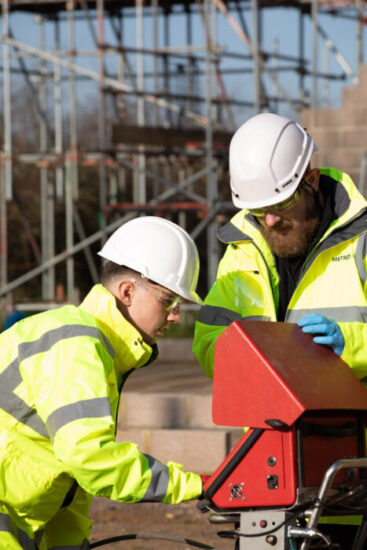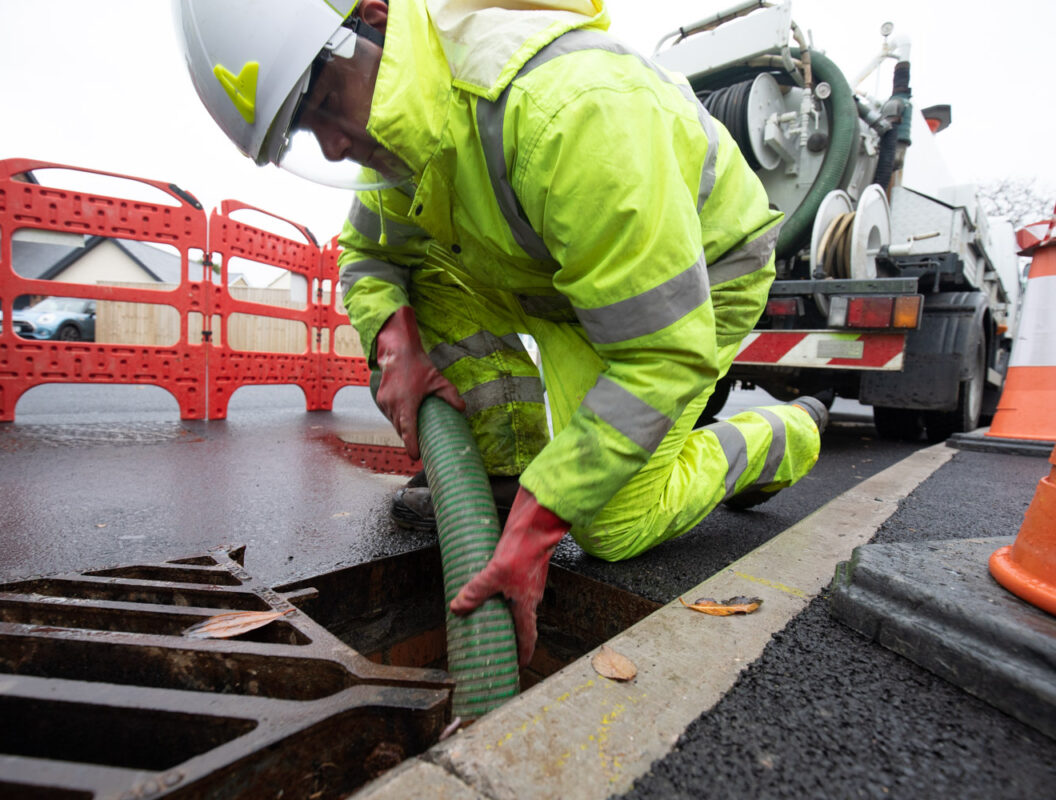As the invisible support system working underneath our homes, businesses and the facilities we use every day, the quality of our drains largely goes unnoticed – until there’s a problem.
If drains have been neglected without maintenance for many years, they’re prone to collapse – one of the most serious issues you can encounter with a drain system.
Here, we explain what classes as a collapsed drain, how and why drains collapse, the signs you might see if your drain has collapsed, how a collapsed drain might impact your property, and how to go about having your collapsed drain repaired.
What Is a Collapsed Drain?
The most common issue people come across with drains is blockages – which create issues but aren’t too troublesome or expensive to fix. Typically, once a blockage is cleared, drain flow returns to normal and you don’t think to think about it again.
However, if a blockage returns quickly after it’s been fixed, or if you begin to experience issues with standing water or the smell of sewage, it is a sign there is a bigger issue and – potentially – a collapsed drain.
Collapsed drains are complex and expensive to fix, and you’ll need help from a professional as soon as you feel it might have happened within your system.
How Do Drains Collapse?
There are several factors that cause drains to collapse – the most common being years of neglect, with no ongoing maintenance or care.
However, drains also collapse due to other factors, including:
- Tree roots – tree roots are constantly growing and moving, and if a pipe drain gets in the way, they can build pressure against it and cause it to break.
- Building works – disruption to road surfaces, significant building projects and drilling underground can all cause drains to become disturbed and in the worst cases, collapse entirely.
- Ground movement – if a drain sits under a driveway or road that experiences heavy traffic, the ongoing weight and movement can cause the drain to crack and collapse.
- Low temperatures – freezing conditions can lead to cracks in drain pipes which, if left untreated, can lead to drains collapsing
- Wear and tear – old drainage systems are susceptible to collapsing due to the wearing down of materials that were once super strong. Some of the drains we use today were installed as far back as World War II.
What Are the Signs of a Collapsed Drain?
If your drain has collapsed, there will be numerous tell-tale signs.
- Ongoing smell of sewage – one of the least pleasant signs of a collapsed drain is an ongoing smell of sewage, typically emitting from an area near a drain, and either inside or outside of your property.
- Sewage or water backing up onto your property – if sewage or foul water is backing up into your property via the sink or toilet, or via the drains in your garden, it’s a sign of a collapsed drain.
- Slow running drains – if it’s taking longer than usual for your sinks or showers to drain, it’s a sign of a potential collapsed drain. If you’ve recently had a blockage in your drain removed and the water begins to run slowly again shortly after, you need to check for a collapsed drain as leaving this to continue can affect your foundations.
- Rodents and pests – if you suddenly begin to experience rats, cockroaches or an excessive amount of flies near your property, a collapsed drain could be the root cause. All of these animals thrive in an abundance of water and are attracted to the waste products in standing water.
- Damp and mould – if you start to spot patches of damp and mould in and around your property, including on your carpets and in the garage if drains run underneath there, it’s a sign you could have a collapsed drain.
Who’s Responsible for Repairing a Collapsed Drain?
If the collapsed drain falls into the boundary of your property, it’s your responsibility to have it repaired and avoid further impact on the surrounding drainage system.
However, if the collapsed drain connects to the main sewer, connects to a neighbour’s drain or leaves your property boundary, there is an onus on the water supplier to be involved in the cost and process of the drain’s repair.
If you suspect a collapsed drain near to your property, contact a drainage expert who’ll be able to identify exactly where the damaged pipe is and whether or not it sits within your property boundary. If not, you can pass the information on to the water company who’ll come and fix it.
Repairing a Collapsed Drain

It’s essential to have collapsed drains fixed as soon as possible to avoid impact on your wider community, and minimise the associated health risks.
If the collapsed drain falls within your property boundary, you’re responsible for having it fixed and will need to call a drainage engineer or expert to advise on the next steps. They’ll assess the current state of the drain and use a CCTV survey to understand the extent of the damage and if there are any major issues elsewhere in your system.
Drain CCTV camera surveys work by feeding a specially designed camera down the drain to carry out the inspection. Our CCTV surveys use bespoke technology to offer the most accurate and in-depth footage, allowing us to report clearly and quickly on the issue. Based on the visual data, our engineers can provide instant feedback and recommendations on the immediate next steps required.
At Metro Rod, we offer 24/7/365 call-outs across the country, with an expansive network of drainage experts who are on hand to support you if your drain has collapsed. We can support you in an emergency situation, and provide ongoing maintenance and support to avoid collapsed drains in the future.
To find out more, explore our website including our drain repair service.

Talk to your local Metro Rod specialist
We are always happy to arrange a free site assessment and no obligation quotations for any work you might need. Alternatively, you can call our emergency hotline number on 0800 66 88 00
Get in touch Drainage Services